A beginner’s guide to sourcing a company beta
18/04/2023

Beta is the measurement of a company’s common stock price volatility relative to the market. If you’re trying to find a current beta for a company there are a number of places to look. These include:
- Bloomberg
- Fame
- Factiva
- Capital IQ
- Datastream
Please bear in mind that the figures may vary slightly depending on the source although the trend should be the same. The differences will be due to the way in which the betas have been calculated. A methodology should be available within each resource.
If you have any questions about betas or sourcing any other financial ratios, please ask any member of SOM Library staff. Email us on library@cranfield.ac.uk or come in and see us.
- Type beta at the command prompt. Do not hit enter.
- You will see Functions, Securities and Search information displayed.
- To see the full range of information and help about betas on Bloomberg, select ‘Beta: Definition’ from within the Search area (at the bottom of the menus).
Finding the current beta for a listed company
- Enter the name of the company you wish to view followed by beta e.g. BP BETA. Do not hit enter.
- From the bottom of the menus, select ‘Search BP Beta’.
- The adjusted beta of BP will be displayed and links are given to the historical beta and regression analysis.

Finding the historical (raw) beta
- From the Current Beta screen, clicking on Historical Beta takes you to a screen displaying a graph and additional data including the raw beta.
- Using the orange boxes on this screen you can change the date range, company, index, lag, etc.
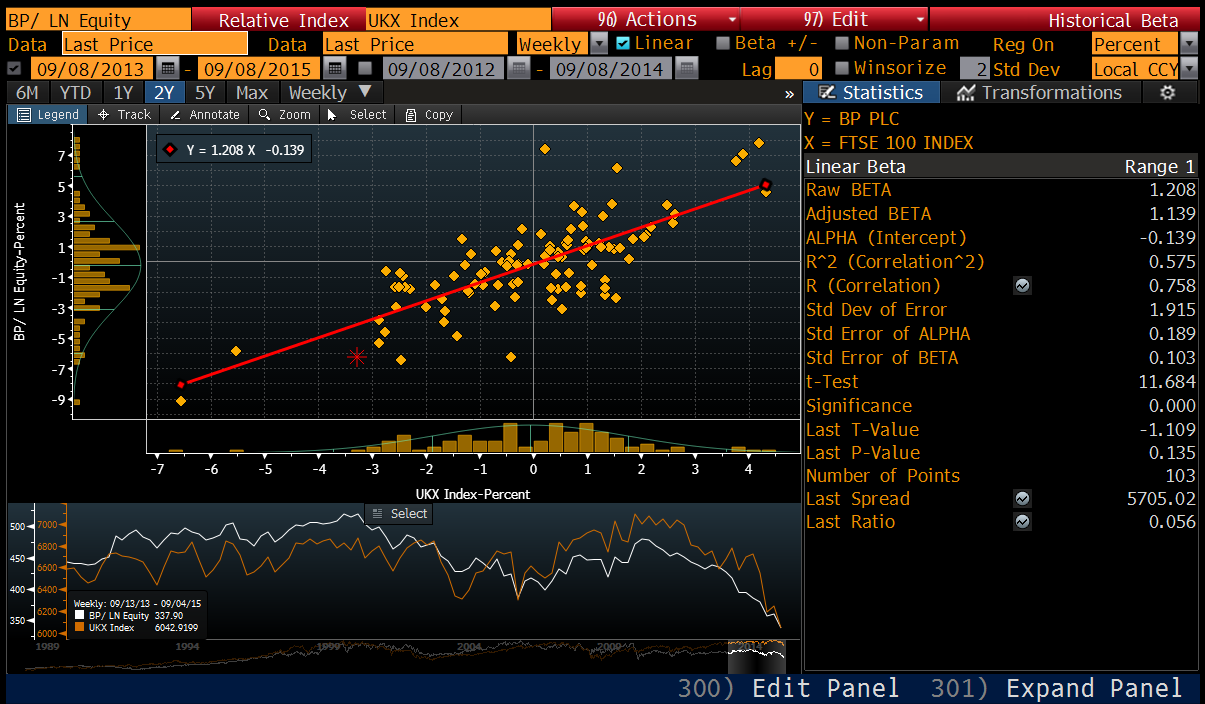
Fame
FAME provides company betas for UK and Irish companies only. Betas are calculated with reference to five key UK indices: FTSE 100, FTSE 250, FTSE 350, FTSE AIM 100 and FTSE All-Share. To find the figures:
- Enter the company name in the search box and select from the dropdown options to open the company profile.
- Open the Table of Contents by clicking on the dots icon on the right.
- From the Table of Contents, open the ‘Stock’ menu and
select the option for ‘Beta and price volatility’.
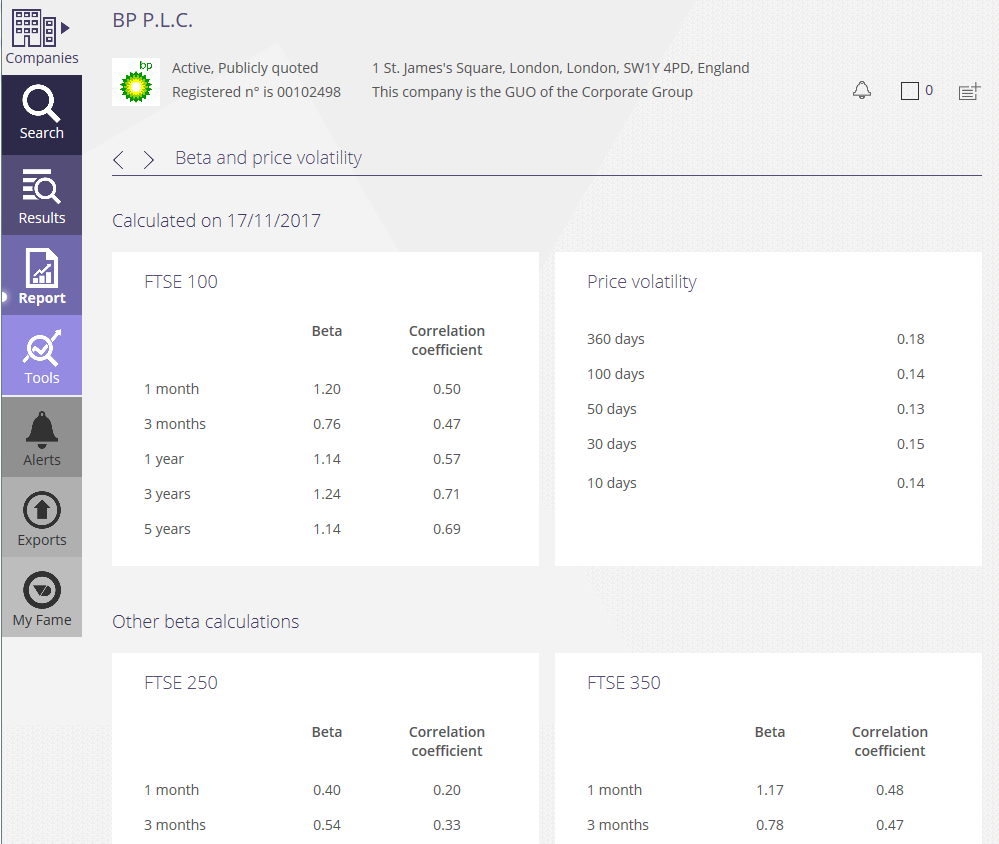
The beta screen will offer you figures for 1 month, 3 months and 1, 3 and 5 years for each of the indices available.
This section can then be exported into PDF or Excel using the on-screen options.
Factiva
Factiva is primarily a source of worldwide news but also includes a section on Companies/Markets which provides financial information for public companies globally and some private companies. Using this part of Factiva you can find both company and industry betas.
To find the company and industry beta for any company:
- Hover over Companies/Markets on the menu bar and then select ‘Company’.
- Type your company name in the search box and select from the options
- From the Overview page, select ‘Reports’ from the left hand menu and then choose ‘Ratio Comparison Report’.
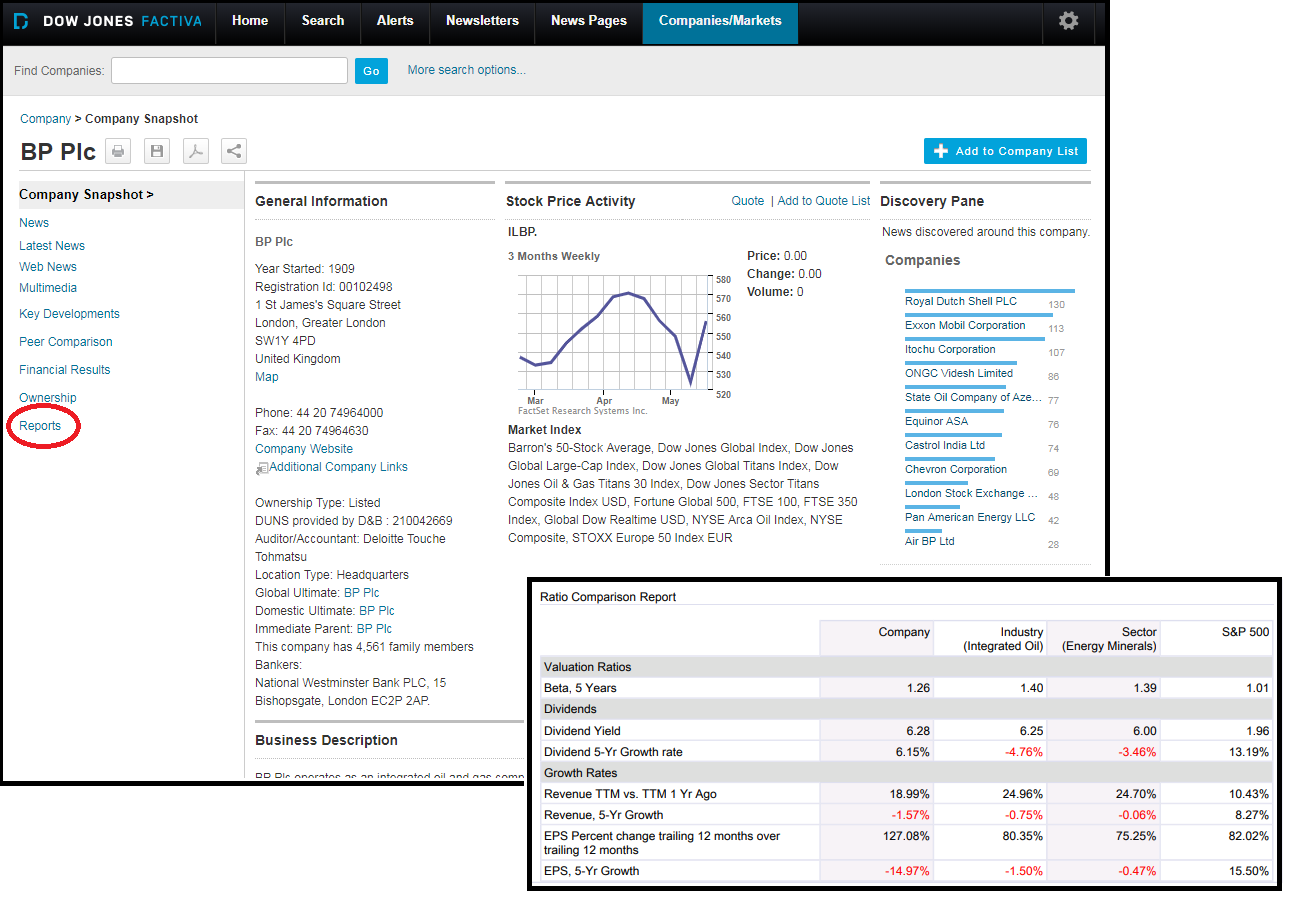
Capital IQ
The 5 Year beta is displayed in the company tearsheet so first enter the name of the company e.g. BP plc in the search box then take a look at the Stock quote and chart section of the screen. The tearsheet can be exported as a quick report or customised.
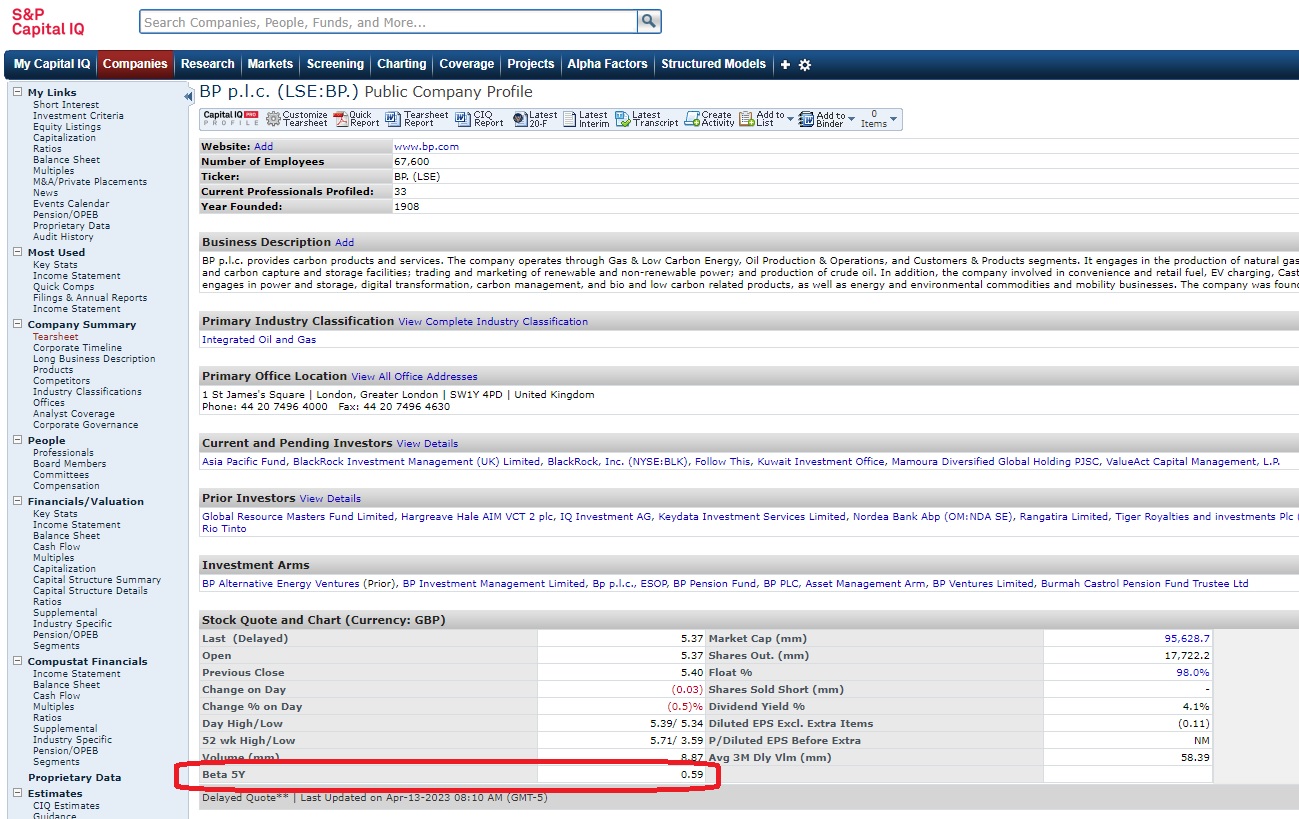
Betas in Capital IQ
To find the 1Year and 2Year Betas you can use the screening tool within Capital IQ :
- Hover over the Screening option on the navy blue navigation panel and select ‘Companies’.
- Under the List Management box, click ‘Add Companies’. You can search for a company and select it by double-clicking the result then clicking ‘Add Criteria’ on the right.
- Under the Financial Information box, select Financial Statements. Scroll down to Market Data -> Stock Price/Volume then select the relevant beta metric and ‘Add Criteria’.
- Once done, you can click ‘View Results’.
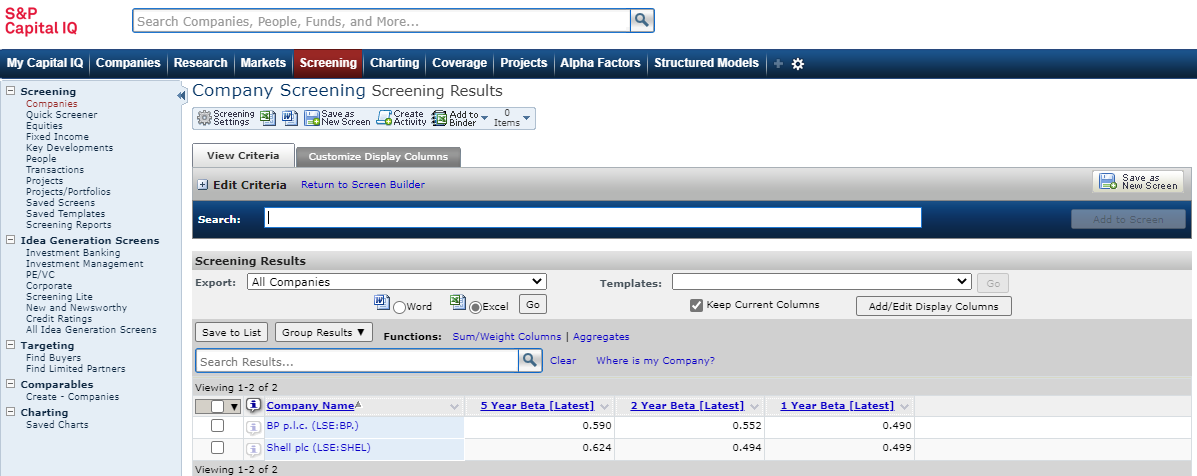
1year, 2year & 5year beta from Capital IQ
Datastream
Datastream provides current betas and pre-formatted expressions to calculate historical betas for quoted companies around the world. In order for Datastream to display Beta calculations, at least 2½ years of data are required. Data is not held historically although it is possible to use formulae to calculate historic Betas.
See also our post on Company Betas in Datastream for more information – not for the faint hearted!
Any questions about any of the above resources – or using them to source financial data, please do not hesitate to contact the SOM Library.
Feature image from AhmadArdity on Pixabay. Available at: https://pixabay.com/photos/business-stock-finance-market-1730089/
Categories & Tags:
Leave a comment on this post:
You might also like…
My Apprenticeship Journey – Broadening Horizons
Laura, Senior Systems Engineer at a leading aircraft manufacturing company, joined Cranfield on the Systems Engineering Master’s Apprenticeship after initially considering taking a year off from her role to complete an MSc. Apprenticeship over MSc? ...
The Library app is back!
The Library app is back! It's exactly the same as before (although it will get a fresh look in a few months) and if you hadn't removed it from an existing device it should just ...
PhD researcher at the IF Oxford Science and Ideas Festival
IF Oxford is a science and ideas Festival packed with inspiring, entertaining and immersive events for people all ages. PhD researcher, Zahra attended the festival. Here she shares what motivated her to get involved. ...
What leadership skills are required to meet the demands of digitalisation?
Digital ecosystems are shifting the dynamics of the world as we know it. With digitalisation being a norm in the software industry, there is currently a rapid rise in its translation ...
My PhD experience within the Centre for Air Transport at Cranfield University
Mengyuan began her PhD in the Centre for Air Transport in October 2022. She recently shared what she is working on and how she has found studying at Cranfield University so ...
In the tyre tracks of the Edwardian geologists
In April 1905 a group of amateur geologists loaded their cumbersome bicycles on to a north-bound train at a London rail station and set off for Bedfordshire on a field excursion. In March 2024 a ...






